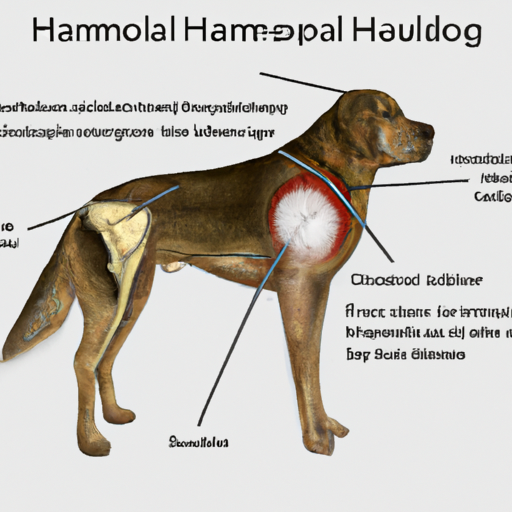Introduction
You’re a dog owner, and your canine companion means the world to you. Just like any other member of your family, when your dog gets sick or injured, you want to understand what’s happening. If your vet has mentioned the term ‘hematoma,’ it’s natural to feel confused and worried. Let’s unravel this intimidating term and help you understand what a hematoma in dogs is and how you can help your furry friend.
Understanding Hematomas
A hematoma is a collection of blood, often clotted, outside of the blood vessels. It typically forms after an injury or due to an underlying condition that disrupts the blood vessels. When a blood vessel bursts, the blood has nowhere to go, leading to a swelling or a mass known as a hematoma. In dogs, hematomas often appear as a swollen bump, usually on their ears, but can form anywhere on their body.
For instance, you might notice something unusual about your dog’s ear. It may be swollen, appearing almost like a pillow. This is a common type of hematoma known as an ‘aural hematoma,’ which occurs in the ear.
Causes and Symptoms
Hematomas in dogs can be caused by:
- Physical injury or trauma
- Over-aggressive shaking or scratching (common with ear infections)
- Blood clotting disorders
Symptoms to look out for include:
- Swelling or mass
- Discomfort or pain
- Limping (if the hematoma is on a limb)
- Head shaking or scratching (if it’s an aural hematoma)
Treatment Options
Conservative Approach
The severity of your dog’s hematoma will dictate the treatment. For minor hematomas, your vet may recommend a conservative approach. This involves:
- Rest and restricted activity
- Anti-inflammatory medication
- Regular monitoring
Surgical Intervention
For larger, more persistent hematomas, your vet may suggest surgical intervention. This can involve:
- Draining the fluid: This provides temporary relief, but the hematoma may recur.
- Surgery: Where the hematoma is opened, drained, and stitched back together.
Preventing Hematomas
Prevention is always better than cure. Although not all hematomas can be prevented, here’s what you can do:
- Regularly check your dog for any swellings or lumps.
- Limit their exposure to situations that can cause physical injury.
- Treat infections promptly to prevent excessive scratching or shaking.
Frequently Asked Questions
Q1: Are hematomas life-threatening?
A1: Most hematomas are not life-threatening but can cause discomfort and pain. However, internal hematomas can be dangerous if not treated promptly.
Q2: Can a hematoma heal by itself?
A2: Small hematomas may resolve on their own, but larger ones typically require medical intervention.
Q3: How long does it take for a hematoma to heal in dogs?
A3: The healing time can vary depending on the severity of the hematoma and the treatment method. It can range from a few weeks to a few months.
Q4: Can I prevent my dog from getting a hematoma?
A4: While not all hematomas can be prevented, keeping your dog healthy, preventing injuries, and treating infections promptly can reduce the risk.
Q5: How is a hematoma diagnosed?
A5: Vets can often diagnose a hematoma through a physical examination. In some cases, they may use an ultrasound or take a needle aspirate to confirm.
In conclusion, a hematoma in dogs can be a cause for concern, but with the right information and swift action, you can ensure your dog gets the best care. Remember, you are your dog’s best advocate. Stay informed, ask questions, and always follow your vet’s advice.



